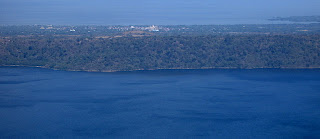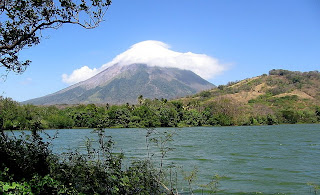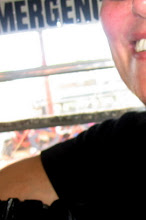 Caterina is a lovely little town that overlooks Laguna de Apoyo. I reached it on a public bus, the supposed 45 minute ride lasting nearly an hour and a half, as we stopped seemingly every few feet to pick up or drop off passengers. I guess, though, at 45 cents, I had no right to complain. The trip wasn't helped by the stretch of construction that dictated alternate one-way traffic, either.
Caterina is a lovely little town that overlooks Laguna de Apoyo. I reached it on a public bus, the supposed 45 minute ride lasting nearly an hour and a half, as we stopped seemingly every few feet to pick up or drop off passengers. I guess, though, at 45 cents, I had no right to complain. The trip wasn't helped by the stretch of construction that dictated alternate one-way traffic, either.
I took one of those three-wheeled vehicles known in Thailand as a tuk-tuk from the point where the bus let me off to the overlook. It turned out to be a reasonable walking distance, but what I've learned is to ride out, and then walk back. That way I know what I am getting into.

The view was spectacular. I could see down into the entire crater, with Granada over by Lake Nicaragua. I even found the swim platform at Crater's Edge. When I was at the laguna, I could see the rim of the crater all around and had a great sense that I was inside a caldera. From above, it looked so much smaller, and so perfect that it seemed a bit like an artifact, an archaeological temple created by some ancient race and carefully excavated.

After lunch in one of the restaurants overlooking the lake, I walked around town for a while. There are many nurseries in the area, raising plants for the local residents and for export as houseplants abroad. Many of the plants we use to decorate our houses or enhance our gardens, such as impatiens, are native to Central Amercia.

During my walk I passed two young women huddled on steps leading into a gardern, correcting each other's math homework. A mother had set up a table and chairs in her garden and was listening to her son read while he daughter worked on her arithmetic. Corn dried on the sidewalk outside a house and horses grazed in a field at the end of a street. The more I wandered the more I liked it.








































